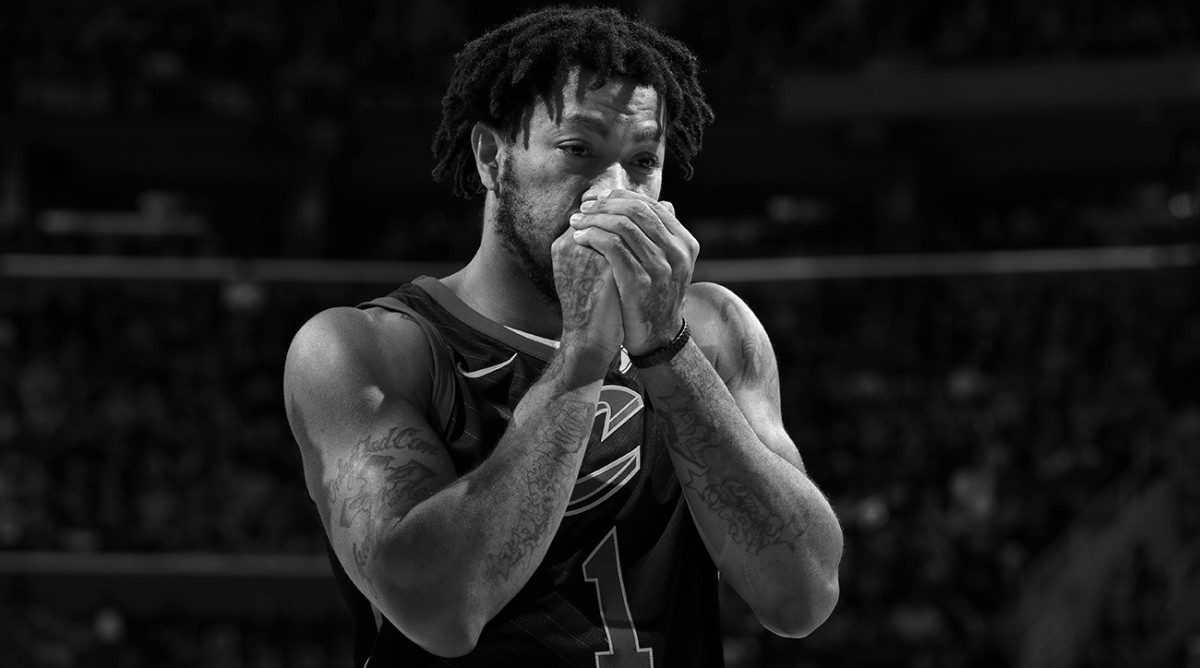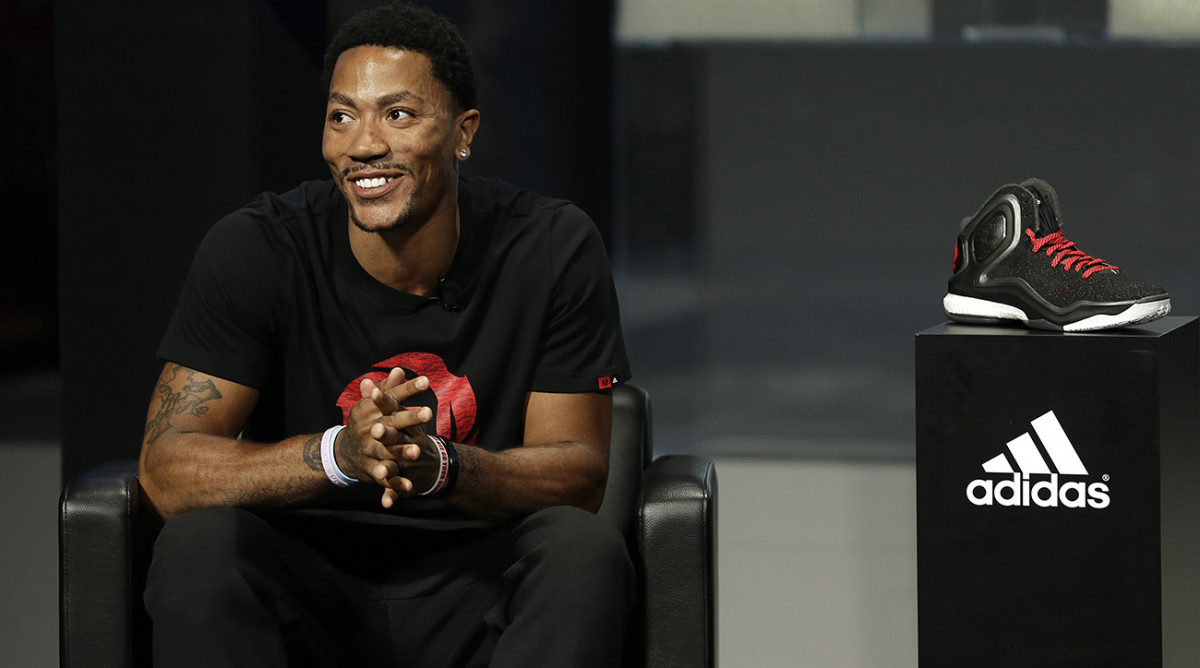Why is Adidas Still Paying Derrick Rose Superstar Money?

If NBA players came with a stock price, late February 2012 represented the peak of the market for Derrick Rose. A fearless point guard for the Bulls, Rose was not only the reigning league MVP; at 22, he was also the youngest player ever to win the award. He had currency and street cred to burn. This was a time when LeBron James had zero NBA titles and polarized fans, still chafed by his Decision. Kobe Bryant was aging. The work-in-progress Warriors would finish that lockout-shortened season 23–43.
Rose’s agents were aggressively renegotiating his deal with Adidas, and during All-Star weekend Rose re-signed, consecrating one of the most lucrative endorsement contracts (reported to be worth $185 million over 14 years) in the history of sports.
Recently SI obtained his 40-page contract with Adidas, and the document shows just how far shoe companies are willing to go to accommodate an athlete. The deal called for annual retainers of $12 million per season from 2012–13 until ’16–17. (This season, he is entitled to $11 million.) It also included annual royalties of up to $6.25 million per year, as much as $4.8 million in annual appearance fees and use of a private plane. (For comparison, SI has learned that John Wall's new Adidas deal calls for him to be a paid a base salary of $4 million). Reggie Rose, Derrick’s older brother, is paid between $250,000 and $300,000 annually as a consultant. Randall Hampton, Rose’s best friend since sixth grade and his assistant, is paid between $50,000 and $75,000 annually for “consulting” services. Adidas also pledged to contribute $150,000 annually to the AAU team of Rose’s choice.
To say that the brand made a big bet on Rose is as great an understatement as saying that it didn’t exactly pay off. Weeks after the deal was signed, in the first round of the playoffs, Rose tore the ACL in his left leg, causing him to miss the entire 2012–13 season. He missed all but 10 games the following year because of a meniscus injury.

Though he has since returned to play, Rose has been a shard of his former self, taking abrupt leaves from both the Knicks and his current team, the Cavaliers. This season, still only 29, Rose has played only 14 games.
His decline in status is reflected starkly in his NBA salary. At one point Rose was earning $20 million per season. Now he plays for the veteran minimum of $2.1 million. And yet, according to records made available to SI, Adidas continues to pay Rose in full.
Like most endorsement contracts, Rose’s calls for reductions and pro-rations. In this case, if Rose fails to make the All-Star team (as he has every year since 2012) or misses more than half the 82 regular-season games (as he did in ’12–13 and ’13–14 and is on pace to do this season), he can be docked pay. But unlike most contracts, Rose’s has clauses nullifying said deductions if he makes various promotional appearances.
What’s more, in 2015, Rose—as well as Hampton—was accused of rape by a former girlfriend. (He was never criminally charged.) Though Rose was cleared by a jury in a civil suit, Adidas conceivably could have invoked the morals clause and asserted that the allegations had, as his contract states, “a material adverse effect against the reputation of Adidas.” Yet the company chose not to.
Provided with the details of Rose’s continued payouts, one longtime sports agent—who has worked with Adidas for decades and thus requested anonymity—expressed surprise: “I’ve never seen anything like this. The shoe companies are rigorous enforcers [of contracts]. There’s a saying: There’s always another player and never enough money.”

Reading the deal, Scott Rosner, the academic director of the sports management program at Columbia, concluded: “I don’t think it was sloppy drafting. I think Adidas didn’t use its leverage; or, at that moment, didn’t have the leverage.” (An Adidas spokeswoman declined to comment for this story, as did Rose, through his agent, B.J. Armstrong, citing the contract’s confidentiality provision.)
Adidas’s treatment of Rose is especially perplexing given how closely the company has held other players to the letter of their contracts. On Jan. 18, 2016, Celtics guard Terry Rozier signed a deal that, according to documents provided to SI, guaranteed him $300,000 over three seasons.
During the 2017 Eastern Conference finals, Rozier wore Nikes during a pregame shootaround. He changed into Adidas shoes for the game, but his public appearance in a rival brand did not escape notice. In a letter delivered by FedEx last May 26, Adidas’s legal counsel Monique Hawthorne notified Rozier, “Adidas is terminating your Agreement effective immediately.” (According to Rozier’s representatives, they plan to arbitrate Adidas’s decision.)
As for Rose, he was asked recently whether his Adidas deal has influenced his decision not to retire. “Man, I don’t care about [that],” he said. “Not to be rude, [but] I don’t care about no f‑‑‑‑‑‑ money.” Adidas shareholders might feel otherwise.
For more on Rose’s contract with Adidas, check out Michael McCann’s breakdown on SI.com.
